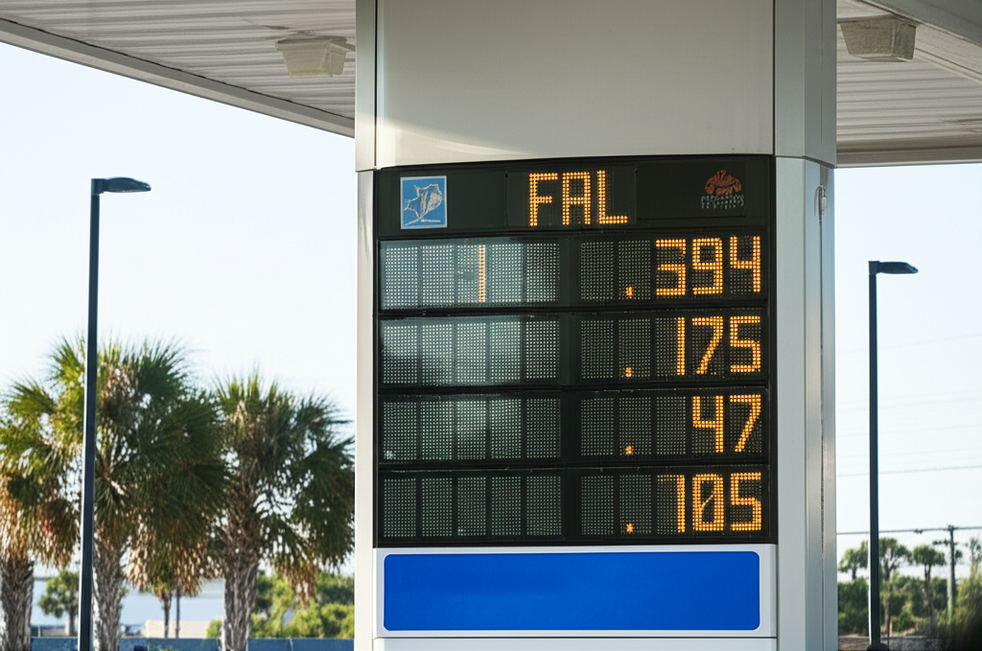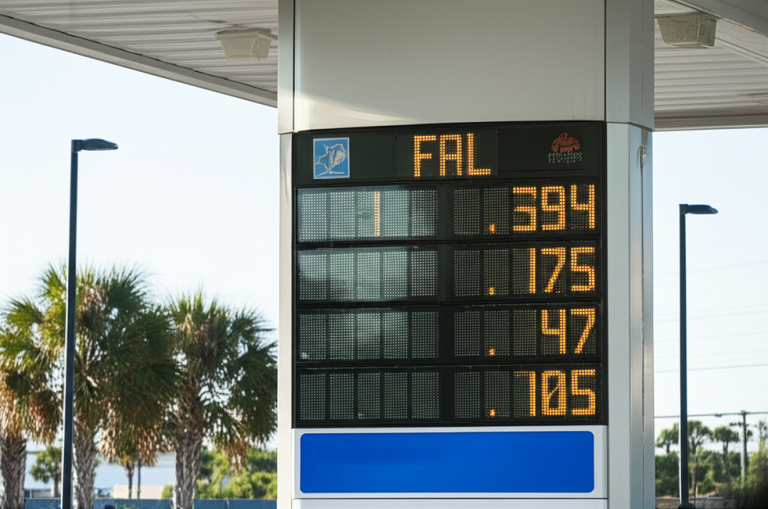
Florida Gas Prices Rose 12 Cents Last Week: A Reflection on Economic Fluidity ⛽️📈
This past week, Florida witnessed a rather unremarkable yet telling phenomenon: gas prices rose by a modest 12 cents. While some might dismiss this fluctuation as a mere blip on the radar, it serves as a subtle reminder that in the world of economics, even the smallest changes can ripple outwards like a pebble cast into a still pond. What does this price uptick signify in the broader context of our daily lives and the state of the economy? Is it simply a seasonal variance? Or is it emblematic of deeper currents beneath the surface? 🌊
The Rise: A Temporary Spike or a Symptom of Something Greater?
To consumers, a 12-cent increase might seem trivial, akin to an annoying mosquito buzzing about on a summer night—irksome but insignificant in the grand scheme. However, this uptick comes amid various pressures: fluctuating crude oil prices, geopolitical tensions, and seasonal demand swings as Floridians gear up for their sun-soaked vacations. The demand for gasoline often peaks in the warmer months, making price assessments a tricky balancing act between expectation and reality.
Consider this: during the first part of 2023, Florida gas prices wavered between $3.20 and $3.50 per gallon. A surge of 12 cents could represent a larger trend towards inflation, reminding us of the finely-tuned dance between supply and demand, as unpredictable as Florida weather.
Historical Context: Lessons from the Past
Reflecting on history, one could compare our current economic landscape to a budding garden: tender shoots of hope interlaced with weeds of uncertainty. The last time gas prices saw a considerable spike was in 2008, driven by a tumultuous cocktail of market speculation and global events. Back then, consumers reacted by tightening their belts, shifting to smaller vehicles, and relying more heavily on public transportation. This transition did not occur overnight—it evolved, much like a butterfly emerging from a chrysalis.
The Inflationary Butterfly Effect
Just as inflation can alter consumer behavior, this latest escalation might prompt Floridians to reconsider their travel habits. With gas prices increasing, will we see a resurgence in carpooling, a decline in road trips, or even a preference for hybrid models over gas guzzlers? Will this minor shift trigger a significant change in energy consumption patterns? After all, the aftermath of price changes can be as profound as the change itself.
Consumer Reactions: The Human Element
As prices inch upwards, the emotional landscape becomes more turbulent than a choppy ocean surfing day at South Beach. Major purchases are postponed, spare change once allocated for a coffee shop run may now funnel towards the gas tank. People often share anecdotes akin to deer in headlights when confronted with prices climbing higher—whether at the pump or in grocery aisles.
Anecdote: The Coffee Shop Dilemma
Take, for instance, a local barista named Sarah, who recently vented about her tightening budget. With gas prices nudging higher, she found herself brewing less coffee at home to save money for fuel. The irony was not lost on her; to earn more, she needed to spend more, a paradox that mirrors countless Floridians navigating financial realities. Could Sarah’s story encapsulate broader economic sentiments? In a world that seems relentlessly driven by consumption, this conundrum paints a striking picture of disconnect.
Future Implications: A New Normal?
As we advance deeper into an era of fluctuating gas prices, we must ask ourselves: are we simply reacting to momentary changes, or are these price shifts ushering in a new economic normal? Analysts predict that barring significant geopolitical shifts, gas prices may stabilize, yet the lessons learned from past fluctuations are vital for consumer resilience. In a sense, we navigate these economic waters like surfers braving turbulent waves—those who adapt swiftly tend to ride the crest instead of getting swamped.
Concluding Thoughts: Fluid Dynamics of the Economy
In the end, while a 12-cent rise in gas prices may appear trivial, it embodies much more than mere cents and dollars—it reflects our collective relationship with economic turbulence. The cycles of supply and demand, the intricacies of global markets, and the human emotions tied to price fluctuations create a vibrant tapestry that is the Florida economy. As we fill our tanks and prepare for summer adventures, we cannot ignore the interconnections and narratives at play. After all, every increase at the pump nudges our awareness of what drives our economy, illuminating the delicate balance of a world always in flux. 🌍




